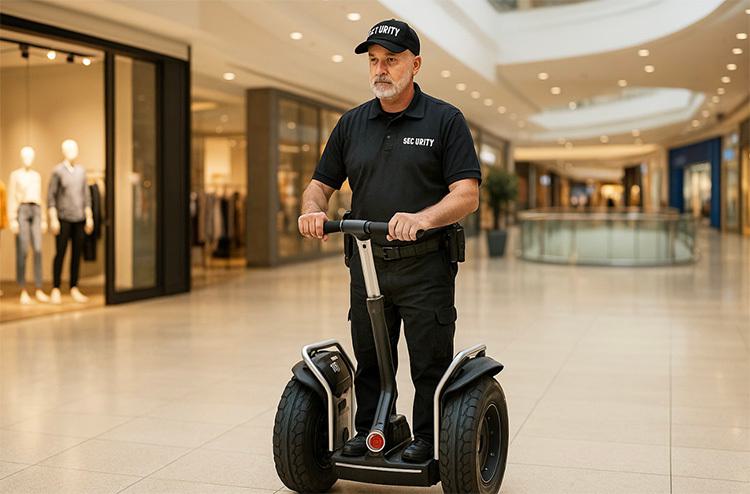Your Invention's Real Competition: Why "Different" Doesn't Mean Commercial Success

Remember the Segway? In the early 2000s, Dean Kamen unveiled this two-wheeled, self-balancing motorized scooter that used gyroscopes and sensors to keep riders upright. Tech luminaries predicted cities would redesign their infrastructure around it. One investor famously suggested it would be "bigger than the Internet."
Today, it's best known as the vehicle mall security guards ride—a punchline rather than a revolution.
The Segway was undeniably brilliant from an engineering standpoint. Yet on Invention City's Inventicator—a tool that evaluates commercial viability—it scores just 35, placing it squarely in the "Long Shot" range. Why? Because the Segway's creators made a critical mistake that dooms countless innovations: they defined their competition too narrowly.
Competition Isn't About Similarity—It's About Substitution
Inventors often have a hard time seeing how and where their invention fits in a competitive environment. When you've poured your heart into creating something new, it's natural to focus on what makes your invention unique and miss the broader landscape.
The Segway team wasn't competing against other self-balancing gyroscopic personal transporters. They were competing against every other way people solve the problem of getting from Point A to Point B: walking, bicycles, skateboards, cars, buses, and subways.
Each alternative had something the Segway couldn't match. Bicycles were cheaper and provided exercise. Walking was free. Cars offered weather protection. The Segway was technologically superior in certain ways, yet inferior in the ways that mattered most to everyday users.
Here's the hard truth: your competition is anything that prevents someone from buying your product.
Your revolutionary kitchen gadget isn't just competing against similar gadgets—it's competing with the old way of doing things and the consumer's decision to spend that money elsewhere. The Segway cost $5,000. For that price, you could buy a used car, an excellent bicycle, or a year of public transportation. None worked like a Segway, but all got you where you needed to go.
The Questions You Should Be Asking
Stop asking "Who else makes something like this?" Start asking:
What are people doing NOW instead? If your invention succeeds, what will people stop using? Those are your competitors. The Segway's competition was walking, biking, riding public transportation, taking taxis (Uber didn’t exist) and driving.
What's the "do nothing" option? Sometimes your biggest competitor is inertia. Your invention needs to offer clear benefits that are unavailable with the status quo and those benefits have to outweigh the costs. The cost of using something new and different is not just the price tag but also possible drawbacks in functionality (the Segway was too wide for sidewalks, too slow for roads), the time to learn how to use it and may even include social costs, including the negative judgments of people seeing you use it.
What jobs does my invention do? Harvard professor Clayton Christensen calls this "jobs to be done" theory. The Segway's job might have been "get to work without being sweaty" or "cover medium distances faster than walking"—and dozens of products already did those jobs.
What will emerge BECAUSE of my invention? The Segway sparked competition from products that learned from its innovations: electric kick scooters, hoverboards, and e-bikes exploded in popularity years later. They were lighter, cheaper, more portable, and less socially awkward to use.
Don't Forget Social Competition
The Segway faced a competitor inventors often overlook: social norms. Riding one not only looked dorky, it took up extra space on sidewalks and forced people to step out of its way. It became a symbol of tech excess. Your invention competes against how people want to see themselves and be perceived by others.
Lessons for Your Journey
Map your ecosystem, not just your competitors. Include the obvious alternatives, adjacent solutions, and even "that's not the same category" options. They're all competing for your customer's money.
Price against substitutes. The Segway's $5,000 price might have seemed reasonable for its technology, but it was absurd compared to a $200 bicycle.
Watch for "good enough" solutions. Electric kick scooters beat the Segway despite being less sophisticated—because they were good enough and far more practical.
Consider the whole experience. The Segway's competition wasn't just about movement—it was about storage, maintenance, charging, weather resistance, social acceptance, and dozens of other factors.
The Bottom Line
The Segway remains a technological marvel and found niche applications in tourism and security. But it never became revolutionary because its creators underestimated their competition.
Your invention doesn't exist in a vacuum. It exists in a complex ecosystem of alternatives, substitutes, and "the way we've always done it." Every one of those is your competitor, whether they look anything like your invention or not.
Before you invest another dollar or hour, ask yourself: what is EVERYTHING people might choose instead of my solution? Your honest answer might be the most valuable insight in your entire innovation journey.
This is exactly the kind of broad competitive analysis that Invention City's Brutally Honest Review provides—looking at not just direct competitors, but all the alternatives and substitutes that might prevent your invention from succeeding commercially.
And remember: somewhere right now, someone is walking where they could be riding a Segway.
Ready for a Reality Check?
If you're serious about your invention's commercial success, don't wait until you've invested years and thousands of dollars to discover what the Segway team learned the hard way. Get a professional third-party perspective now.
Invention City's Brutally Honest Review gives you exactly what every inventor needs: an objective assessment of your invention's competitive landscape, market viability, and commercial potential—plus a chance at licensing opportunities if your invention has what it takes.
Sometimes the most valuable investment you can make is finding out the truth before you go too far down the wrong path.
share this article: facebook